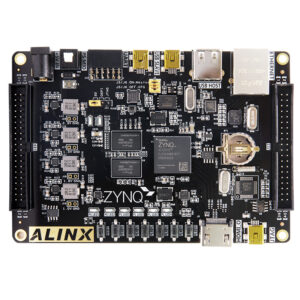We would have worked with resistors that is used to reduce current flow, and, at the same time, act to lower voltage levels within circuits. At times we need to control the input while the circuit is functioning. We can go for a Variable Potentiometer that is used to change the resistance of 1K ohm to 10K ohm in an electronic circuit to control the volume of an audio, or for motion control etc.
But what is a Potentiometer?
A Potentiometer also known as Pot or Trimmer, is a three-terminal resistor(as shown in figure 1) which is meant to be correctly set the voltage when installed in some device which is adjusted by the user. It is worthwhile to have a look at a few of the common pot types that are available. Figure 1 shows an array of conventional pots – both PCB and panel mounting. So Potentiometers are widely used throughout electronics wherever adjustments must be made during manufacturing or servicing.

The Physical features of a Variable Potentiometer
Potentiometer comeswith a sliding contact that forms an adjustable voltage divider as shown in figure 1. They have three terminals, where the one in the middle is known as the wiper (trimmer pot) or slider (slider pot), and the other two are known as ends. They are usually physically much smaller and it is not advisable to operate with a finger (not that it gives an electrical shock!) but can be operated by a small screwdriver poked through a hole in the case to allow rotational motion without dismantling.
Now let’s see the working of a Variable Potentiometer
Normally, Potentiometers are wired as variable voltage dividers: connect +V to one side, connect the other side to ground, and the middle pin will output a voltage between 0 and +V (figure 2). However, by only connecting two pins (one outside pin and one center pin) of a potentiometer to your circuit, you can turn a pot into a variable resistor. Think about it this way: the potentiometer is filled with resistive material and tuning the knob in a rotational motion or forward-reverse changes the amount of this material that the electrons must travel through before leaving the pot. This means that the maximum resistance of this variable resistor is the total resistance of the pot. In a Rotatory pots, the rotational motion is translated into a change in resistance in the electrical circuit. This change in resistance can be used to adjust some aspect of the electrical signal, such as the volume of an audio signal, reduce the flow of voltage or for motion control etc. They have 270 degrees of rotation from one extreme to the other. A “single turn” pot is therefore really only a 3/4 turn device. They are mounted directly on circuit boards and rated for many fewer adjustments over their lifetime.

As shown in figure 2, Potentiometer consists of a track which provides the resistance path. Two terminals of the device are connected to both the ends of the track (1 and 3 as shown in figure). The third terminal is connected to a wiper (No 2 as shown in figure) that decides the motion of the track. The motion of the wiper through the track helps in increasing and decreasing the resistance.
An example to reduce the flow of Voltage in a circuit
Connect VCC (1 or 3 as in figure) to an outer pin, GND (1 or 3) to the other, and the center pin (2) will have a voltage that varies from 0 to VCC depending on the rotation of the pot. Hook the center pin to the source of voltage and motion of the center pin helps in increasing and decreasing the input up to 10K ohm! A clear cut example of how a Variable potentiometer works done is shown using the Proteus tool:-

In figure 3, we can see that a 12V battery supply is given to the Variable Pot which controls the flow of voltage across the circuit which consists of a Lamp, an Electrical Fuse and a DC voltmeter. Initially when supply is given from battery, the Variable Pot is set to low and no current flows. In figure 4, we can see that the Variable Pot is set to high and allows the passage of current which in turn lets the lamp glow, the Fuse bursts which is visible in the DC voltmeter reading 11.9V or 12V.

Thank you for reading this blog, For more information about the product please visit: http://www.tenettech.com/product/4100 For technical queries please drop an e-mail: info@tenettech.com






